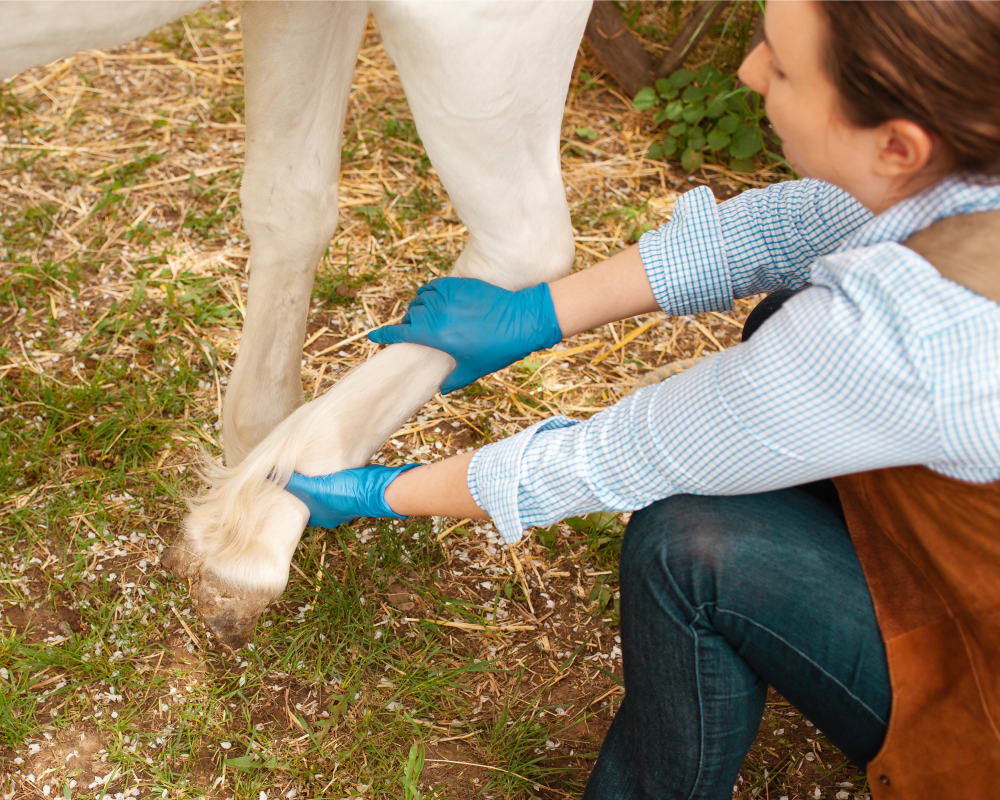Abscess Treatment
Development of Hoof Abscesses
An abscess often develops suddenly within your horse's foot, leading to severe pain and lameness. That said, it is also possible for symptoms of a hoof abscess to appear slowly, as swelling increases and pressure within the hoof gradually leads to lameness.
Hoof abscesses occur when bacteria invade the hoof, typically through a puncture wound in the sole, or a diseased white line. This painful condition can also develop from something as simple as a bruise on the hoof due to hard ground.
Once the bacteria have invaded the hoof, a tough pocket begins to form beneath the surface and fill with fluid. As the amount of fluid increases pressure begins to build within the hoof, leading to severe pain.
In many cases, the fluid will be forced to escape through a rupture in the coronary band or through the sole. If pain persists without this tell-tale blow-out, your farrier or vet can trim the hoof to give the infected fluid a place to escape. If left untreated, abscesses can lead to an infection of the coffin bone (pedal osteitis).

Diagnoses & Treatment for a Hoof Abscess
Veterinarians typically check for abscesses using hoof testers which are instruments that apply pressure to the sole. By gauging the reaction of the horse to the pressure created by the tester, your veterinarian can determine where the abscess is and where the best spot is to create a drainage tract.
Once the abscess has been drained it will be necessary to follow post-operative care instructions provided by your vet. Instructions may include soaking the hoof in warm water and Epsom salts to increase drainage and help remove infection, and wrapping the hoof to prevent further bacteria and debris from entering the abscess.
Preventing Abscess in Horses
Regular visits from a farrier for hoof trimming play a key role in preventing abscesses. A properly trimmed hoof is less likely to develop white line separation and thrush, which can lead to the development of abscesses. Thoroughly and regularly picking out your horse's hooves can help prevent bruising, and properly fitted shoes can be protective.
Monitor your horse carefully. Contact your vet right away if your horse begins to show signs of lameness. Timely treatment is essential to prevent the spread of infection and damage to the hoof or coffin bone. Early veterinary care is important for preventing pain and ruling out other causes of lameness.
Services Available In-Hospital*
Diagnostics
Reproduction
Internal Medicine
Non-surgical Colic Care
Critical Care
Surgical Services
Regenerative Therapy
24/7 Emergency Care
*Services are available in our Hortonville hospital by appointment. No appointment required for emergencies.
Rehabilitation Services*
Lameness Exams
Diagnostics
Acupuncture
Abscess Care & Treatment
Spinal Manipulation Therapy
Dentistry
Ophthalmology
Regenerative Therapy
Podiatry
*Rehabilitation services are available by appointment and will be performed on your farm.
New Patients Welcome
We are welcoming new patients at Great Lakes Equine. We can't wait to meet you and your horse. Book an appointment today.
